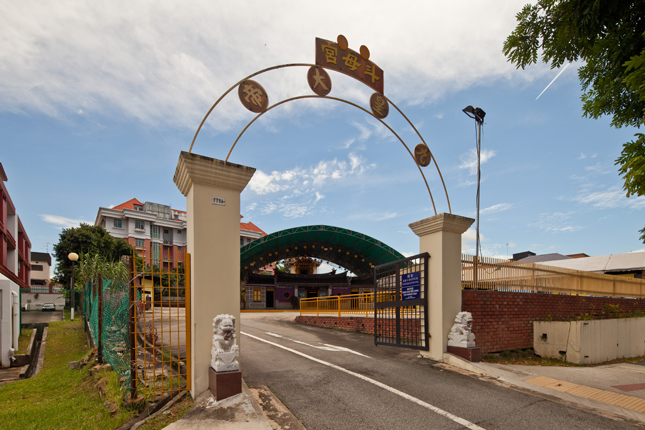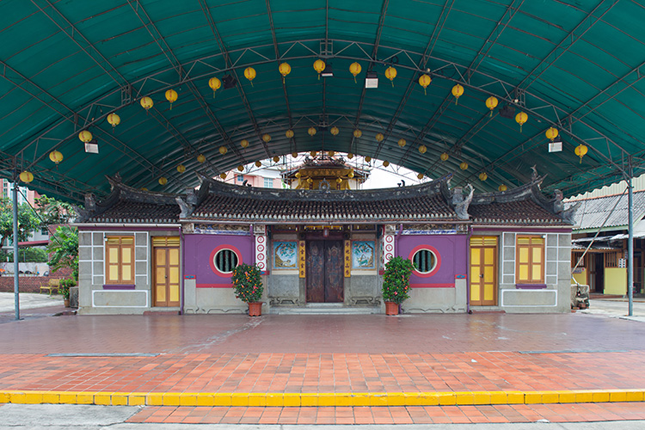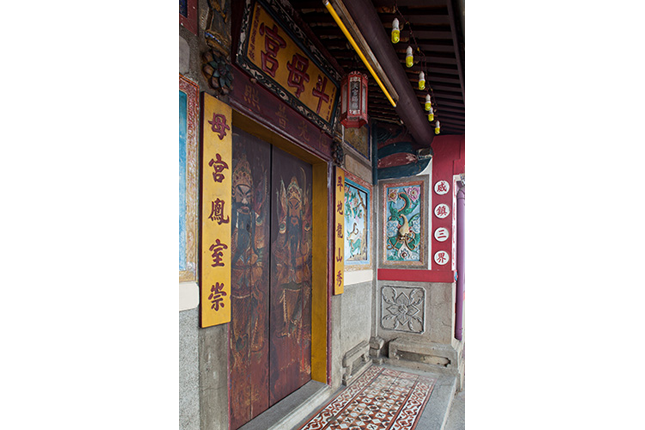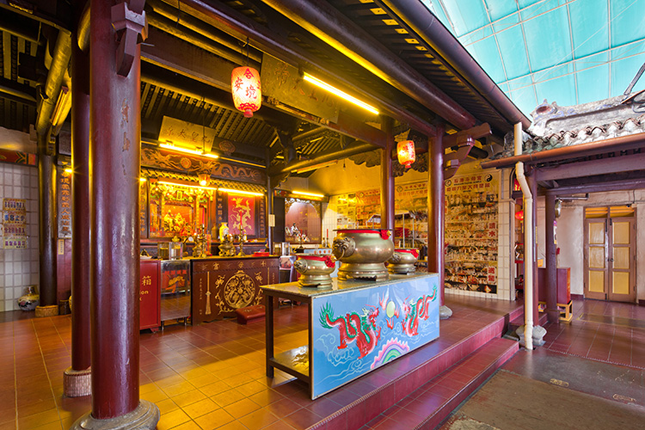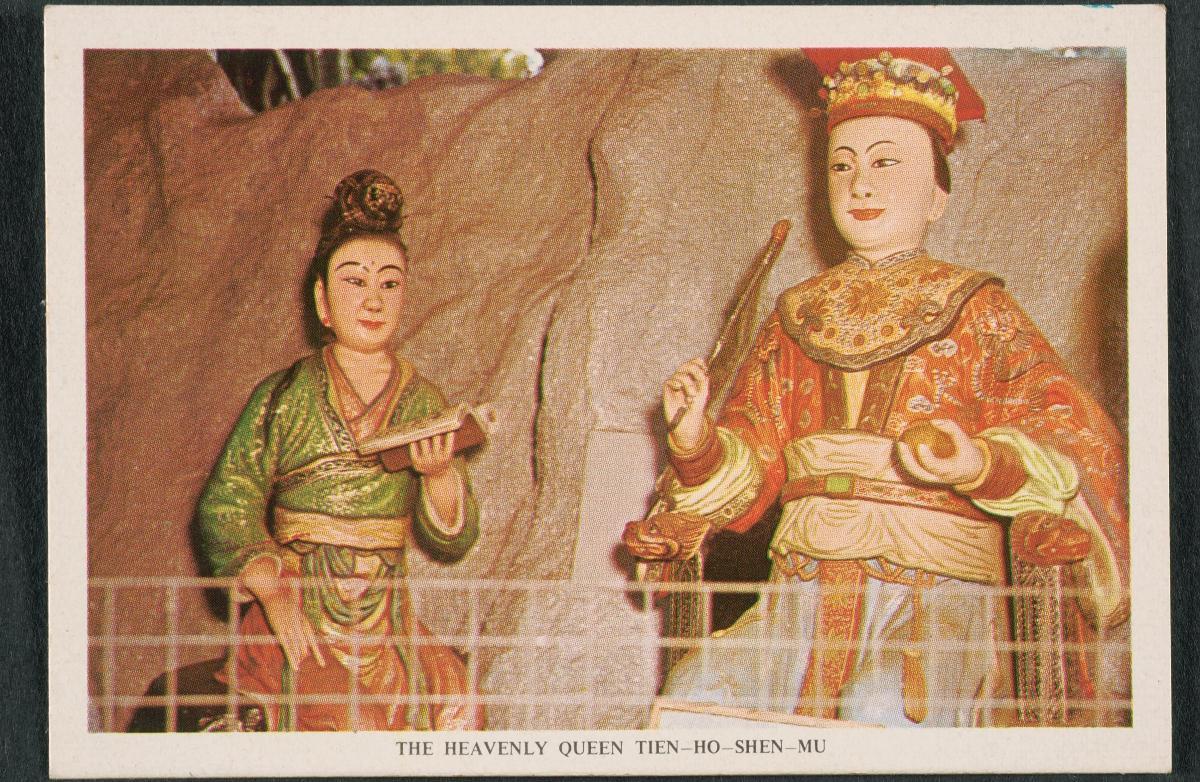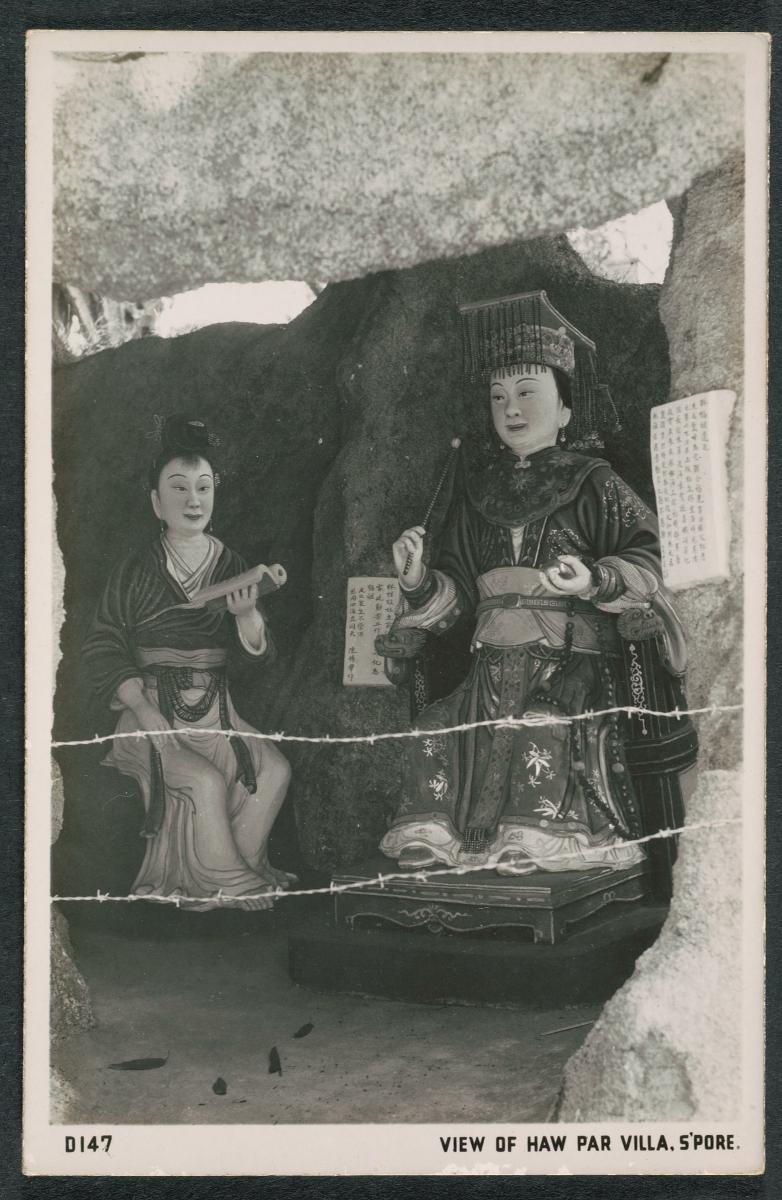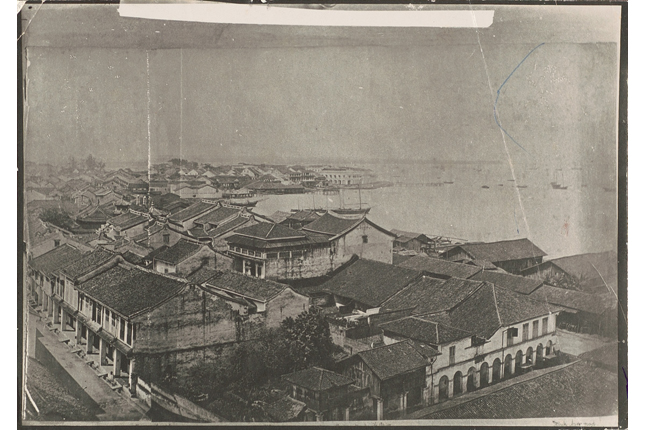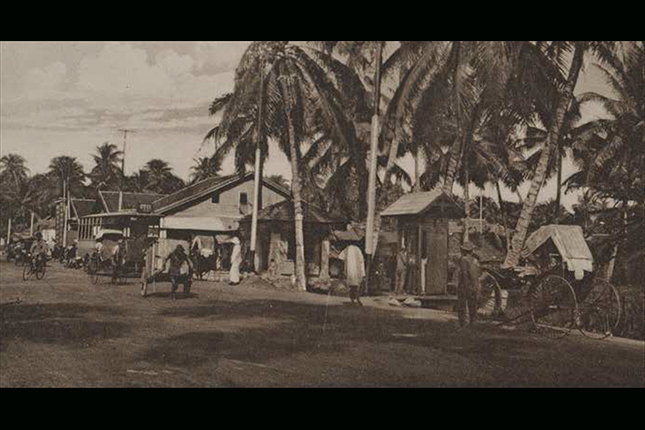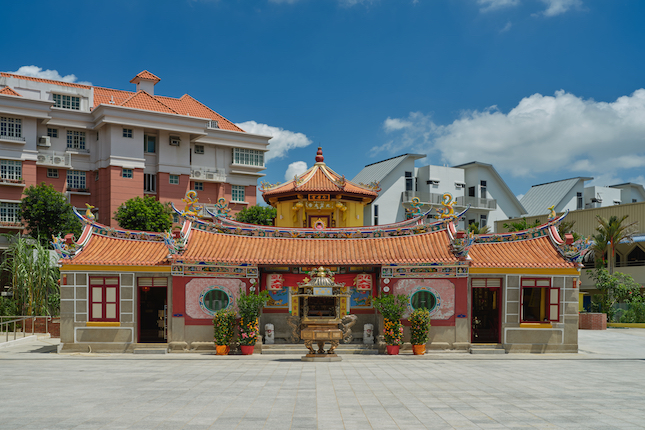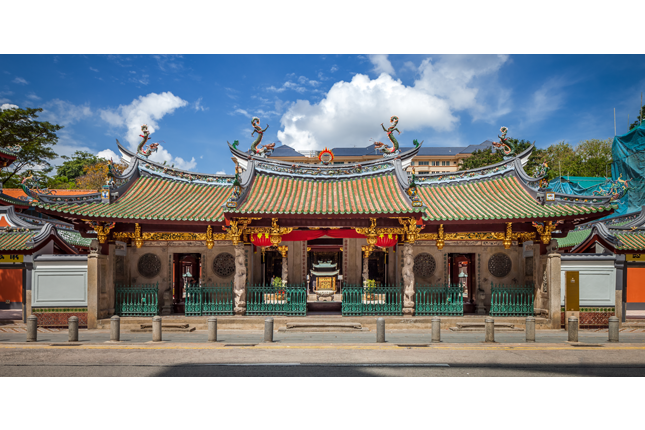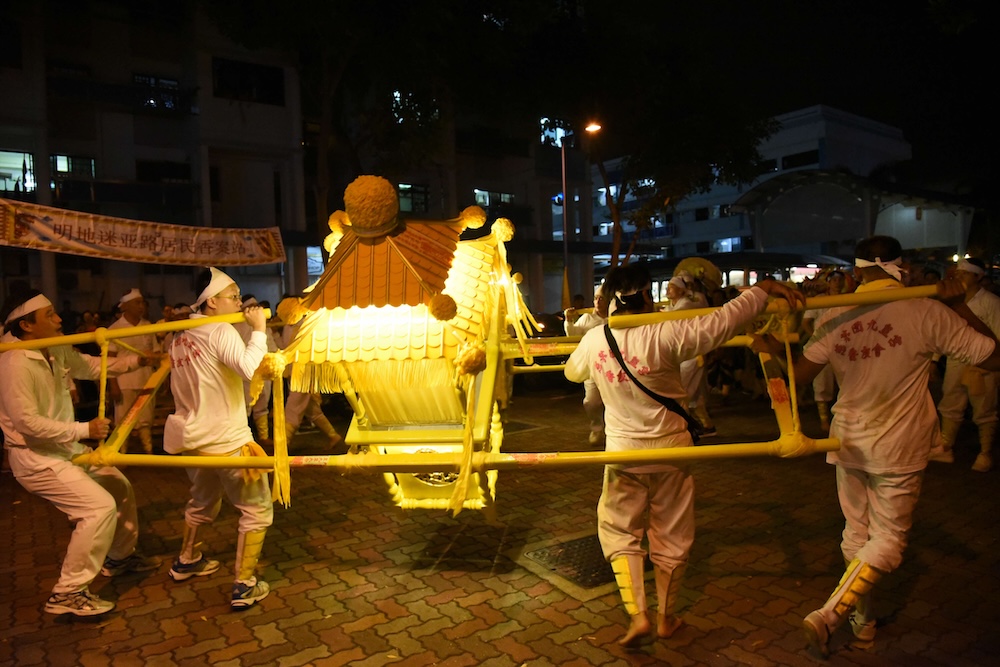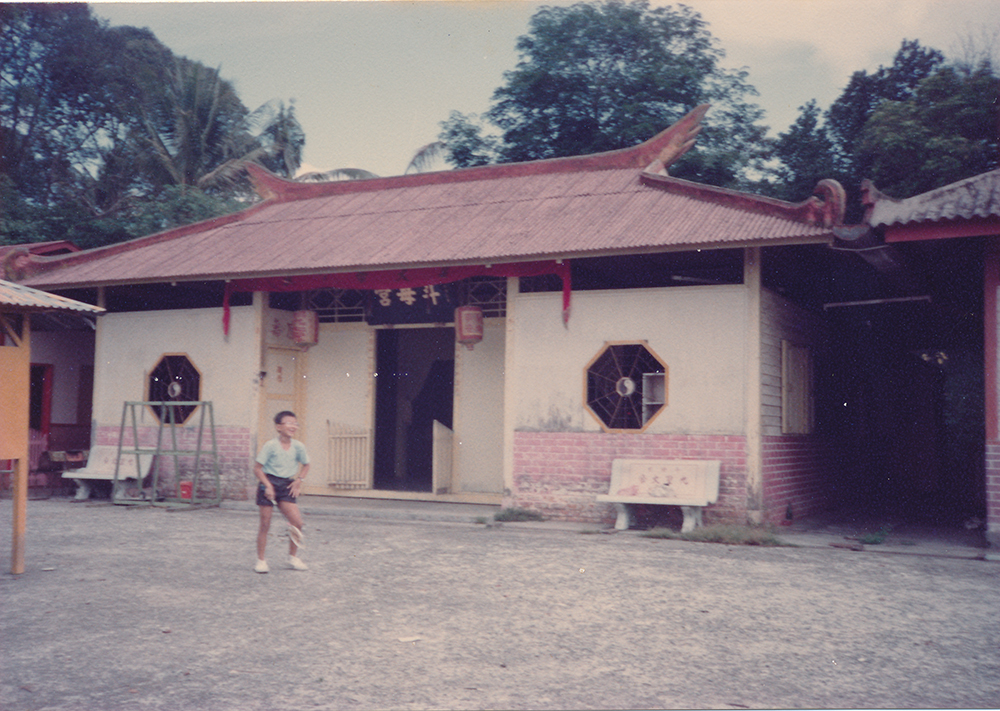Tou Mu Kung (斗母宫) is the oldest temple in Singapore dedicated to the Taoist deity Jiu Huang Ye (九皇爷, ‘Nine Emperors’ or ‘Ninth Emperor’). Besides serving the spiritual needs of both the Hokkien and Teochew communities in its vicinity, the temple also attracts huge crowds of devotees from all around the island, particularly during the grand festivities held in honour of Jiu Huang Ye during the ninth month of the lunar calendar. Its existence also indicates the spread of the Chinese population to and the development of the suburbs in the early twentieth century.
Little Shrine
Tou Mu Kung began as a humble home shrine in Lorong Chuan. It was founded by Ong Choo Kee (王珠玑), a Chinese merchant from Nan’an (南安) County in Fujian Province, China. Ong had vowed to venerate Jiu Huang Ye for his entire life should he be granted successful business deals in Penang. As the story of Ong’s success spread, the shrine saw an increase in the number of worshippers. One of the devotees, a wealthy Hokkien pineapple tycoon by the name of Ong Chwee Tow (王水斗), donated a land parcel in Hougang for the erection of a proper temple structure. Construction began in 1919, and by 1921, the temple was completed.
Teochews in Hougang
Hougang, or Aukang in Teochew, means ‘back of the port’. In the early days, Teochews lived in the area around the Singapore River. They later began to settle in Hougang. Many of them were fishermen, farmers, and rubber tappers. As the population increased, the area developed and quickly became a suburb of Singapore Town. In addition to Tou Mu Kung, another well-known place of worship, the Church of the Nativity of the Blessed Virgin Mary, was erected by Catholic missionaries to cater to the expanding Teochew Catholic community living in the vicinity.
Deities
The Hokkien community refer to Tou Mu Kung as Kiu Ong Yah or Kau Ong Yah Temple (九皇爷庙, ‘Temple of the Ninth Emperor’), which accurately reflects the main Taoist deity worshipped in the temple. While the temple is dedicated to Jiu Huang Ye, it is officially named in honour of another deity, Dou Mu Yuan Jun (斗母元君, ‘Mother of the Big Dipper’), who is the mother of Jiu Huang Ye. Believed to be holding the Register of Life and Death, she is venerated by devotees in hope of prolonging one’s life and avoiding calamities. One version of the legend tells of Jiu Huang Ye as comprising nine stars: the seven stars constituting the Big Dipper and two assistant stars that are invisible to the naked eye.
Another legend describes Jiu Huang Ye as a single entity, often represented by an incense burner instead of a statue. This form of Jiu Huang Ye is adopted by Tou Mu Kung which enshrines the sacred incense burner on the upper floor of the two-storey pagoda behind the temple. Access to the pagoda is restricted to males.
On the ninth day of the ninth lunar month every year, Tou Mu Kung holds a grand celebration to mark the end of the nine-day festival in honour of Jiu Huang Ye, who is believed to visit his worshippers annually. A boisterous procession of nine heavy, richly ornamented sedans in the streets is the climax of this day. To the devotees, the wildly rocking sedan are manifestations of the deity’s prowess and divinity.
Other deities installed in the temple include Xuan Tian Shang Di (玄天上帝, ‘Heavenly Emperor’), Guan Sheng Di Jun (关圣帝君, or Guan Yu, 关羽, the defied Chinese general from the Period of the Three Kingdoms), and Guan Yin (观音, commonly referred to as the Goddess of Mercy).
Architecture and Furnishings
The original Tou Mu Kung was designed and built in the traditional Hokkien architectural style that is specific to Quanzhou (泉州), Fujian Province. This style is characterised by pronounced curvatures in the roof ridges. An example of such can be found on the roofscape of Thian Hock Keng, one of the oldest Hokkien temples in Singapore. Even though the temple’s founder and land donor were both Hokkien, several Teochew architectural features were adopted for its new design when it was subsequently renovated, as many living in the Upper Serangoon area were Teochew immigrants. The roof ridges of the current temple are straighter, similar to the ones on Yueh Hai Ching Temple.
Like other traditional Chinese temples, Tou Mu Kung is constructed in the usual three-hall typology, complete with an entrance hall, main hall, and rear hall. However, these halls are so compacted that they appear to be a single unit. There used to be a permanent stage in the forecourt which was built in 1925. Wayang (traditional Chinese opera) performances were held there during the celebrations of Jiu Huang Ye’s birth. Although the permanent stage has been demolished in 1998 due to a road-widening project, the temple continues to erect a temporary stage each year for wayang performances during the grand festival.
Tou Mu Kung Today
Even though there are other temples dedicated to Jiu Huang Ye today, Tou Mu Kung remains as one of the most popular places of worship for devotees of Jiu Huang Ye in Singapore.
Our National Monuments
Our National Monuments are an integral part of Singapore’s built heritage, which the National Heritage Board (NHB) preserves and promotes for posterity. They are monuments and sites that are accorded the highest level of protection in Singapore.




